Khrystyna came to Kyiv from the front for a few days. During this time, she decided to take a psychological support course to help her fellow soldiers with mental problems more effectively. For the meeting, Kris put on her military uniform and pinned her awards on it. "This is how much I have collected in almost two years of war," she said. Among all of them, the "Steel Cross" of the Commander-in-Chief of the Armed Forces of Ukraine, received from Zaluzhnyi, stood out. In addition to the awards, the paramedic's brightly colored socks with drawings of the famous cartoon series attracted attention. "This is to make civilians realize that the military are just like ordinary people," explained Khrystyna.
Khrystyna Kris is a senior combat medic with the 112th Brigade of the Territorial Defense Forces of Ukraine. Since the beginning of the full-scale invasion, she has been working in the Kharkiv and Donetsk sectors. She has saved up to a hundred Ukrainian servicemen and not a single person has been killed while providing assistance. She is constantly improving her skills in the field of paramedicine and emphasizes that all Ukrainians should have the basic skills.
In an interview with Ukrinform, she spoke about the basics of paramedicine, explained the specifics of the work of medics at the front, and shared some impressive, almost fantastic stories from the front.
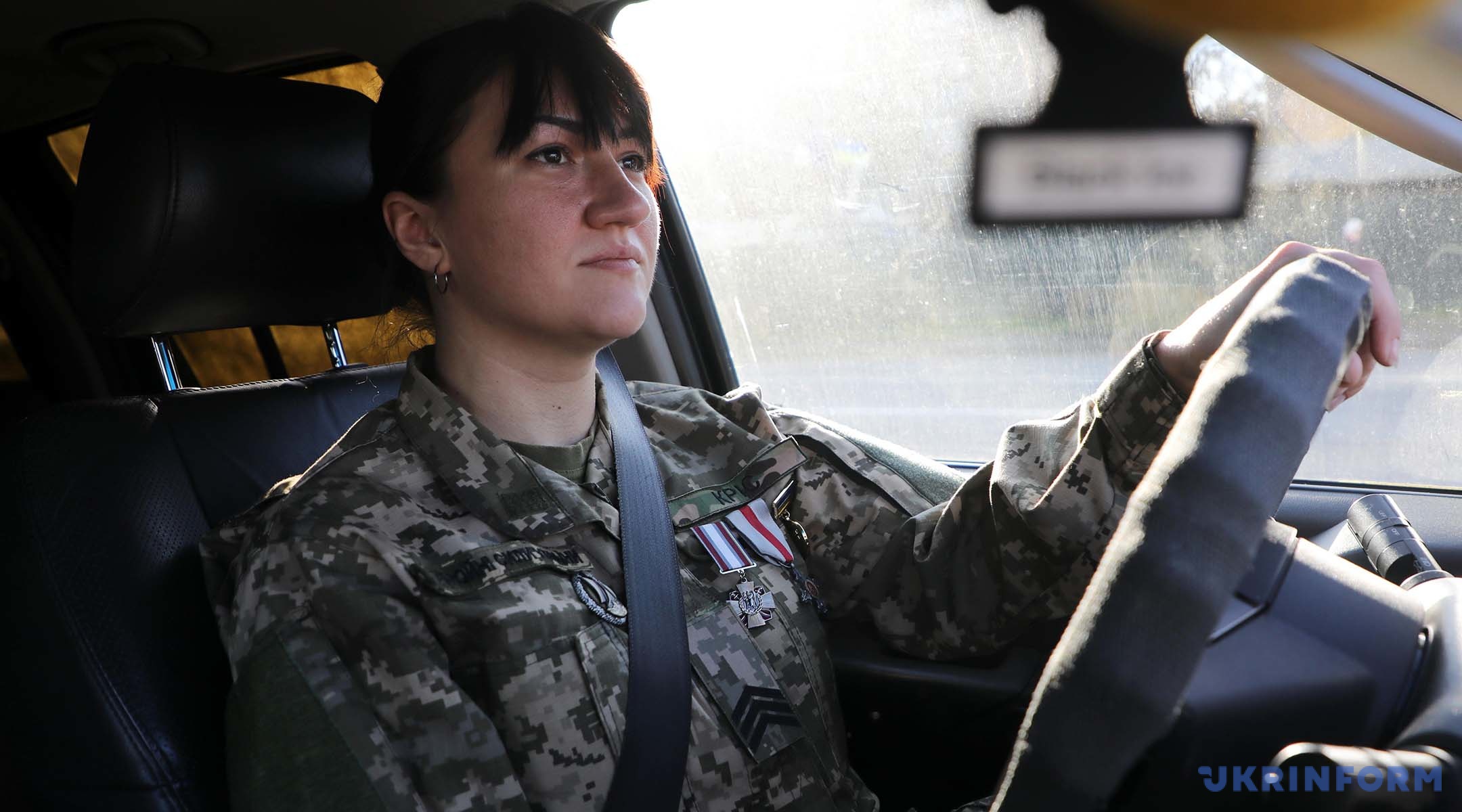
A DOCTOR ENTERS A STERILE OPERATING ROOM, WHILE A PARAMEDIC SOMETIMES HAS TO FIGHT FOR A CHANCE TO SURVIVE IN A TRENCH
- Many civilians still confuse doctors and paramedics. What is the main difference between these two professions?
- To become a paramedic, you need to complete at least three advanced training courses in the TCCS categories. The first level is ASM, which is an ordinary fighter-rescuer. Then there is the CLS, which is a person with advanced qualifications. And the third level is the SMC, which I am currently studying for. The last courses are usually for those who already have a medical degree. A paramedic is the highest level of a savior at the front, because he can work in a stabilization center, perform operations, and fight.
- How long does it take to become a paramedic?
- We are talking about 4 modules of the course. The first one, for example, I took over 4 days. In 4 months, you can reach the level of a combat medic according to NATO standards.
- Is a paramedic of the highest category able to help when it comes to diseases that are not related to the course of hostilities?
- Even at the entry level, every combat medic should be able to help with gastrointestinal problems, headaches, etc. We know what medicines can be given to a soldier directly in the trench. These are medicines that do not thin the blood. This is very important, as it can save a sick soldier from critical blood loss in case of injury in the future. The higher the qualification of a medic, the more he understands the specifics of medicines.
- Is it necessary to be a medic in civilian life to become a paramedic?
- No! The head of our battalion's medical service, for example, has 20 years of experience in surgery, teaches medicine at universities, but constantly emphasizes that combat medicine is a completely different thing.
- Is this due to the fact that civilian doctors are not adapted to work in combat conditions with specific wounds resulting from combat operations?
- Yes, we are talking about completely different conditions. Combat medics save people directly in the trenches. In civilian hospitals, a doctor enters a sterile operating room where a patient under anesthesia is waiting for him. In war, however, sometimes you have to fight for a chance to survive.
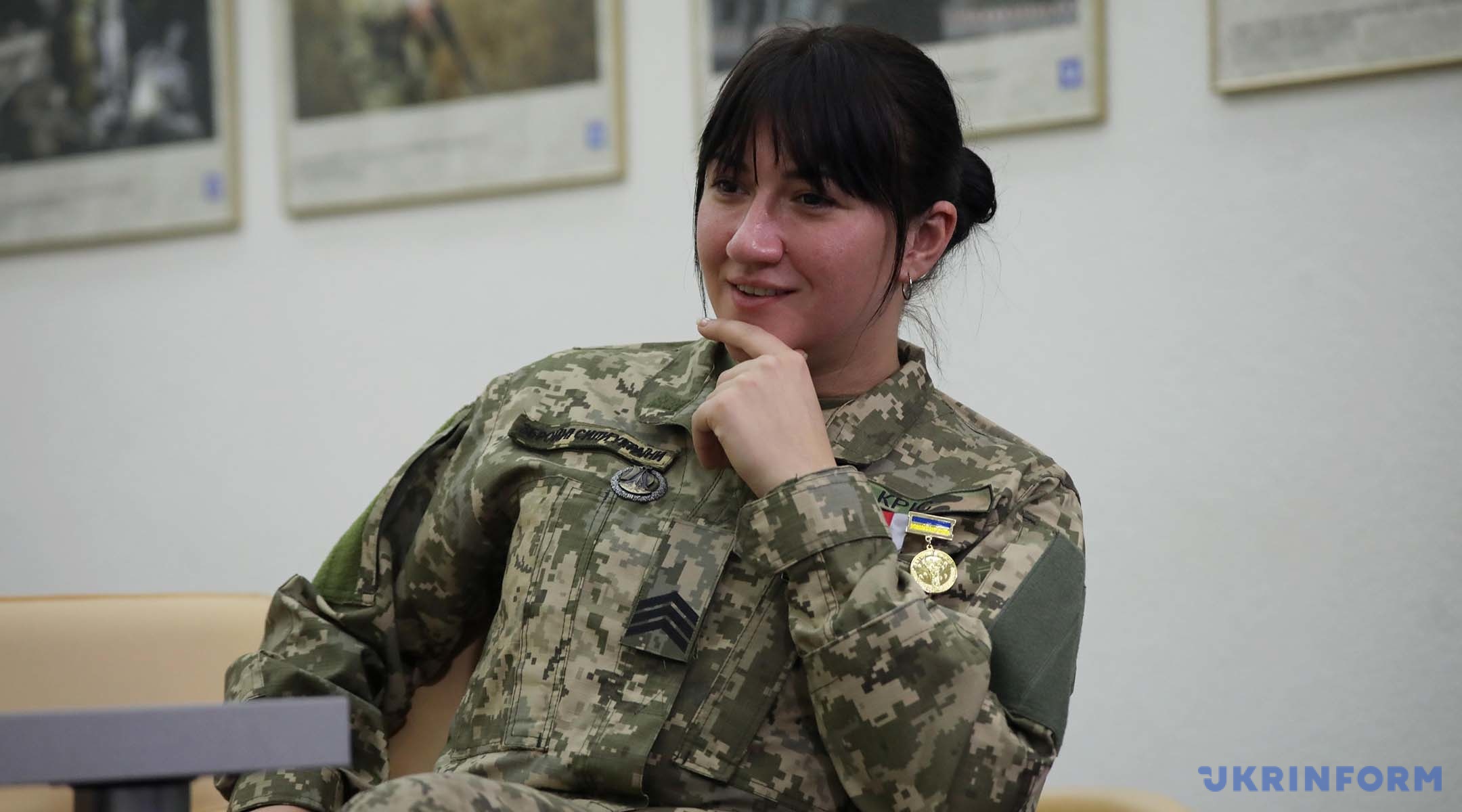
99 PERCENT OF UKRAINIAN MILITARY HAVE MASTERED THE BASIC LEVEL OF PARAMEDICINE
- What are the basic skills for paramedics?
- First of all, you need to learn tactics. A paramedic is a fighter who is also able to provide assistance to his fellow soldiers. Handling weapons and physical training are the basis of everything. From a medical point of view, it is about the ability to apply a tourniquet, provide breathing to a person who does not have this process, and use a bandage. This should be enough to evacuate from a trench.
- Are these skills required for all military personnel?
- Absolutely. 99 percent of the Ukrainian military have mastered at least the basic level of paramedicine. Everyone is able to provide first aid to themselves. If I am wounded, every soldier to my left and right will help me.
- To what extent does a paramedic influence the course of combat operations?
- The presence of a paramedic has a psychological impact on the group. Soldiers who go to the front line feel calmer knowing that they have a paramedic with them. The paramedic is also able to engage in combat, which increases the effectiveness of the group. At the same time, the paramedic's task is not to destroy the enemy, but to save Ukrainian heroes.
- How many paramedics go to the positions with the soldiers?
- It all depends on the goals and tasks to be accomplished. In any case, each of the soldiers carries a first aid kit, which contains the first aid supplies. You will use it for them if necessary. Also, keep in mind that a lot depends on the size of the group. The bigger the group, the more paramedics there are. The more active the fighting, the more paramedics are needed. One medic is needed for ten people, but this is conditional. If the situation is critical, uninvolved medics can go with the group.
- Without what device can a paramedic not go to the position?
- A tourniquet.
- Why do the military take 4 tourniquets with them, if they can only apply 3 on their own?
- The fourth one is a spare turnstile that can be used to help a fellow soldier if necessary.
- What do you put in your backpack before you go to the position?
- A medical backpack and a Skedco stretcher [a rigid stretcher for evacuating the wounded from the battlefield.] The backpack contains a lot of gloves, because you cannot approach the wounded without them. You never know what diseases the person you are helping may have. The backpack should also contain tourniquets, bandages, nasopharyngeal and laryngeal airways, and occlusive stickers.
- Did you weigh your medical equipment before going out?
- I did not, but it is really heavy. I do a little trick if the medics come with me: they can take some of the equipment.
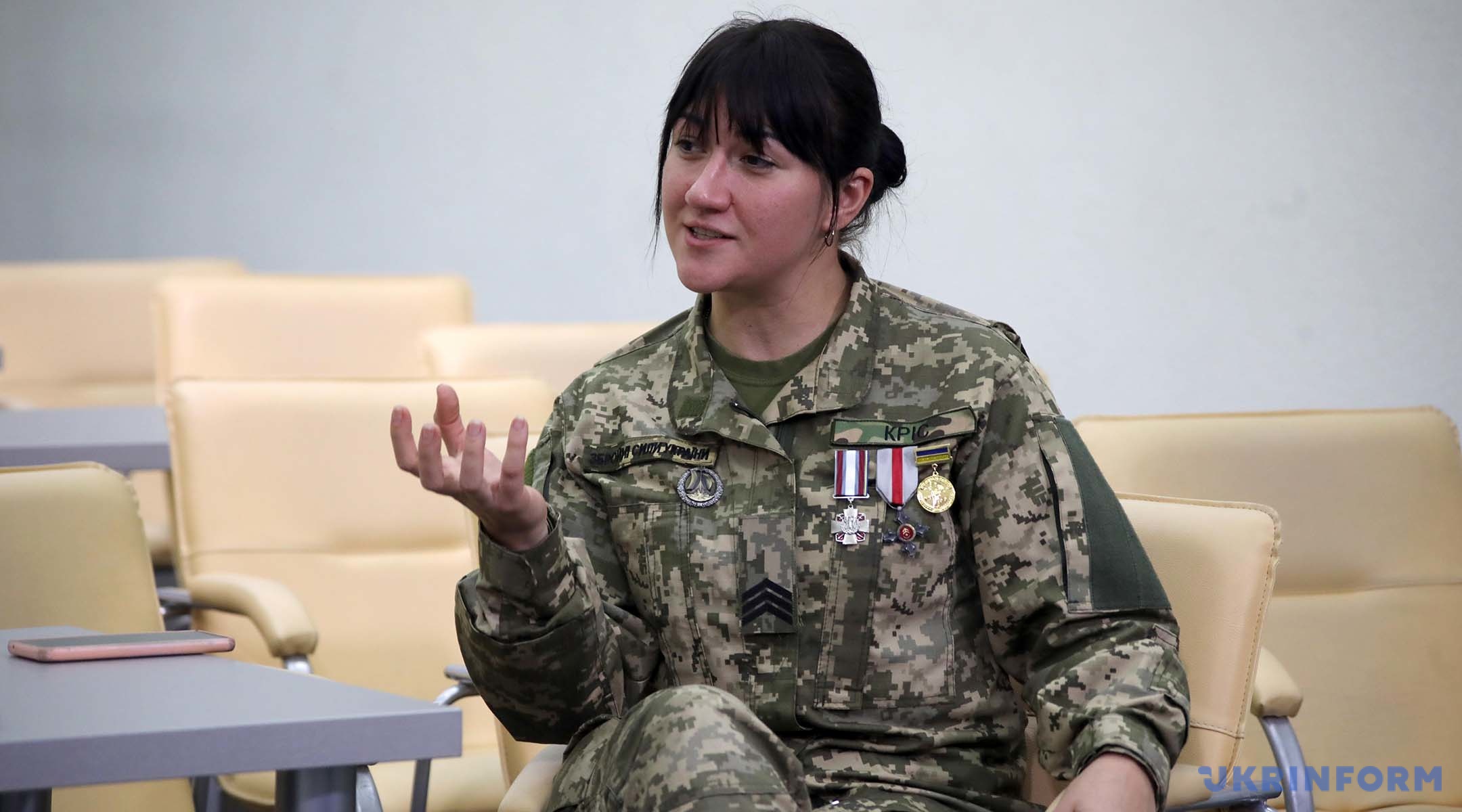
7 MINUTES OF EXAMINATION OF THE WOUNDED WILL AFFECT NOT ONLY THE LIFE OF THE SOLDIER, BUT ALSO ITS QUALITY IN THE FUTURE
- How long does it take to evacuate a wounded person? Are there any prescribed rules?
- There is a so-called "golden hour" rule, but any combat medic knows that the less time it takes to evacuate, the better. Much depends on how you organize the evacuation process. We tried to set up the process so that from the moment of injury to the moment when the soldier is lying on the surgical table, it would take a maximum of an hour. There are some injuries when we realize that a person can wait until the shelling stops. In this case, there is no need to endanger the evacuation armored vehicle. When it comes to serious injuries, time is of the essence.
If we have the necessary equipment at the ready, then obviously the chance to save a person increases. I know a story when a group of attack aircraft near Bakhmut could not leave their positions for 6 days because of shelling. They had two lightly wounded, whom they helped during this period. The soldiers used antibiotics and bandages, so everything ended well.
- What is the best transportation for evacuation?
- It all depends on the area of the front and the danger that lurks there. I'm afraid of something big and armored, because the target is more important than the medics. We loaded the wounded into a pickup truck because it is mobile and maneuverable. The enemy might spare a shell for the pickup. From the practical point of view, the best vehicles are those on tracks, because ordinary wheels are easily punctured by the debris. I am skeptical about the innovations with motorcycles and buggies, because I feel uncomfortable in unprotected vehicles.
- What kind of assistance is provided to the wounded during evacuation?
- We understand that in the red zone, at ground zero, it is difficult to provide specialized assistance - mainly the turnstile. After the evacuation, in the first zone, you can examine the soldier. These 7 minutes is a time that affects not only the fighter's life, but also its quality in the future. Without this, the wounded will not be able to get to the staging area.
- What should you say to severely wounded soldiers during evacuation, what words should you choose?
- If a person is conscious and can be talked to, it is already good. We communicate so that the person does not "switch off". On the way, I try to fill out the wounded man's card, the so-called "Form 100", with information about the fighter, his blood type, allergies, and the drugs he has already been administered. This will help doctors to act properly in the future. In addition, it will allow them not to "lose" a fighter in the hospital.
- Who should be helped first: the one who asks for help or the one who is no longer talking?
- In my experience, 90 percent of the fighters did not ask for help. There is an algorithm that will help to adequately assess the situation. It all depends on the number of wounded and, accordingly, the number of medics in a particular area of the front. Lightly wounded people are usually helped by their comrades-in-arms. I try to help the most seriously wounded. No one has died in my arms so far. There were cases when people came in already dead...
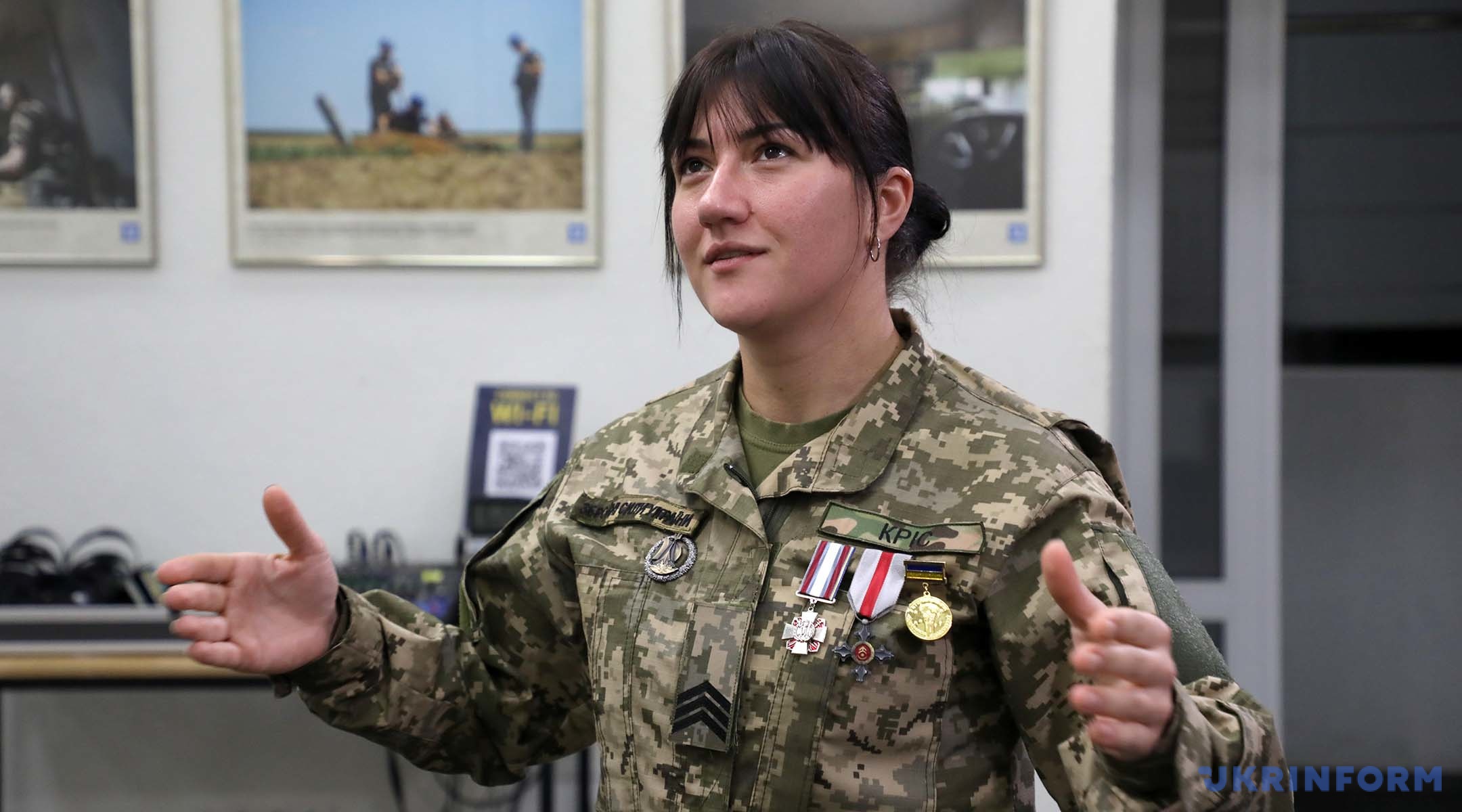
A BAD TOURNIQUET USUALLY LEADS TO DEATH. THE CHANCES OF SURVIVAL DURING MASSIVE BLOOD LOSS ARE ALREADY VAGUE
- What help can you provide, and what can only be done by surgeons at the staging areas?
- If a person is in shock, has lost almost all blood, has amputated limbs, a bullet wound to the head and no breathing, there is a chance to save him or her... I had such a case.
- Can you tell us about it in detail?
- It was night, winter. I have only a driver in my team. We are standing on the Svativ direction at the evacuation point directly in the field. An armored car with four wounded men approaches us. One of them was pronounced dead, another had his right leg amputated and his right arm smashed. Another had both legs amputated below the knee. The last one had an almost through bullet wound to the head, a broken leg, a fragment in the abdomen and no breathing. In addition, he was no longer bleeding. He was in a state where the remnants of blood were circulating through the main arteries (brain and lungs).
Fortunately, the driver was quite skilled in paramedicine. It was he who provided assistance to a fighter with both legs amputated. Another was helped by a medic who ran up to us. I took care of the most difficult fighter. First, he had to be warmed up. First of all, we had to provide tourniquets on his limbs to prevent any blood from leaking out. I did not touch the head injury - there was a bandage. I also did not touch the abdominal cavity, because we can harm the soldier even more. I applied a bandage there even without tamponade. The number one task is to restore breathing. He had a head injury, so I could not use tubes. If the nasopharynx is crushed, the tube that is led from the nose to the larynx could go directly to the brain. In that case, it was virtually impossible to save the person.
We loaded the wounded and went to the stabilization center. Twice, the most seriously wounded completely stopped breathing. If it had been possible to establish an intraosseous access, with the help of which I could have infused him with a blood substitute, it would have been easier... He was operated on, transported to Kharkiv and then to Kyiv. He was in a serious but stable condition.
It's a pity that I have no contact with him. I know his name is Serhiy and he is 27 years old. In the spring, he was supposed to start rehabilitation and research on what mental level he is at. At the initial stages, we cannot predict at what level he will have the processes we call basic. We should not make premature conclusions, but I hope that he will remain a conscious citizen of our country.
- Do you provide assistance to civilians if necessary?
- I also have a story for this case. In general, a paramedic counts on his equipment to save his fellow soldiers, because you cannot leave them behind. Sometimes you have to go beyond the limits. Once a 14-year-old child ran up to me and said that her little brother was wounded. They were in the basement because their house was destroyed. In such a case, you need to leave your radio station for the medics on duty so that your unit can still communicate and get help. That's exactly what happened. Meanwhile, I went to the basement with the children. That area was just being shelled with grenades. I went in and saw an 11-year-old boy who was covered in blood: there was a huge piece of shrapnel in his left leg. I provided first aid to the child directly in the basement. Then I had to take him out of the room and move him to an evacuation vehicle. The only thing the child was afraid of was anesthesia, so he asked not to have it done. This boy was very lucky, because at that time one of the best vascular surgeons in Ukraine was working at the Kupyansk station. Not only did they save the boy's leg, but they also sutured all the veins and put the bone back together. I saw this boy later: he was still on crutches, but he was already asking to play football after rehabilitation.
- The media has repeatedly reported on the supply of low-quality turnstiles to the frontline. What is the main danger of fake turnstiles?
- I am extremely categorical in such matters. Mostly, low-quality turnstiles come from volunteers who do not know what quality equipment should be. I still take bad samples from the military and change them for normal ones - a bad tourniquet usually leads to death. In case of massive bleeding, the chances of survival are generally quite vague... A bad tourniquet will lead to a loss of time, which in turn will lead to lost milliliters of blood. During a massive bleeding, a person has no more than 2 minutes, so the importance of a tourniquet cannot be overestimated.
- Sometimes it happens that people are unaware of certain injuries and suffer significant blood loss. How can this be prevented?
- Yes, it is true. The only way out of the situation is a thorough examination of the wounded. There have been cases when the wounded did not take off their shoes, and they had large fragments in their feet. Luckily, we noticed this in advance, but in the worst case scenario, he would have died of blood loss over time. There are no minor injuries at the front. For example, we are skeptical about contusions, but this is a very terrible injury. It is a closed head injury that causes irreversible changes in the brain. A person can become epileptic after a concussion.
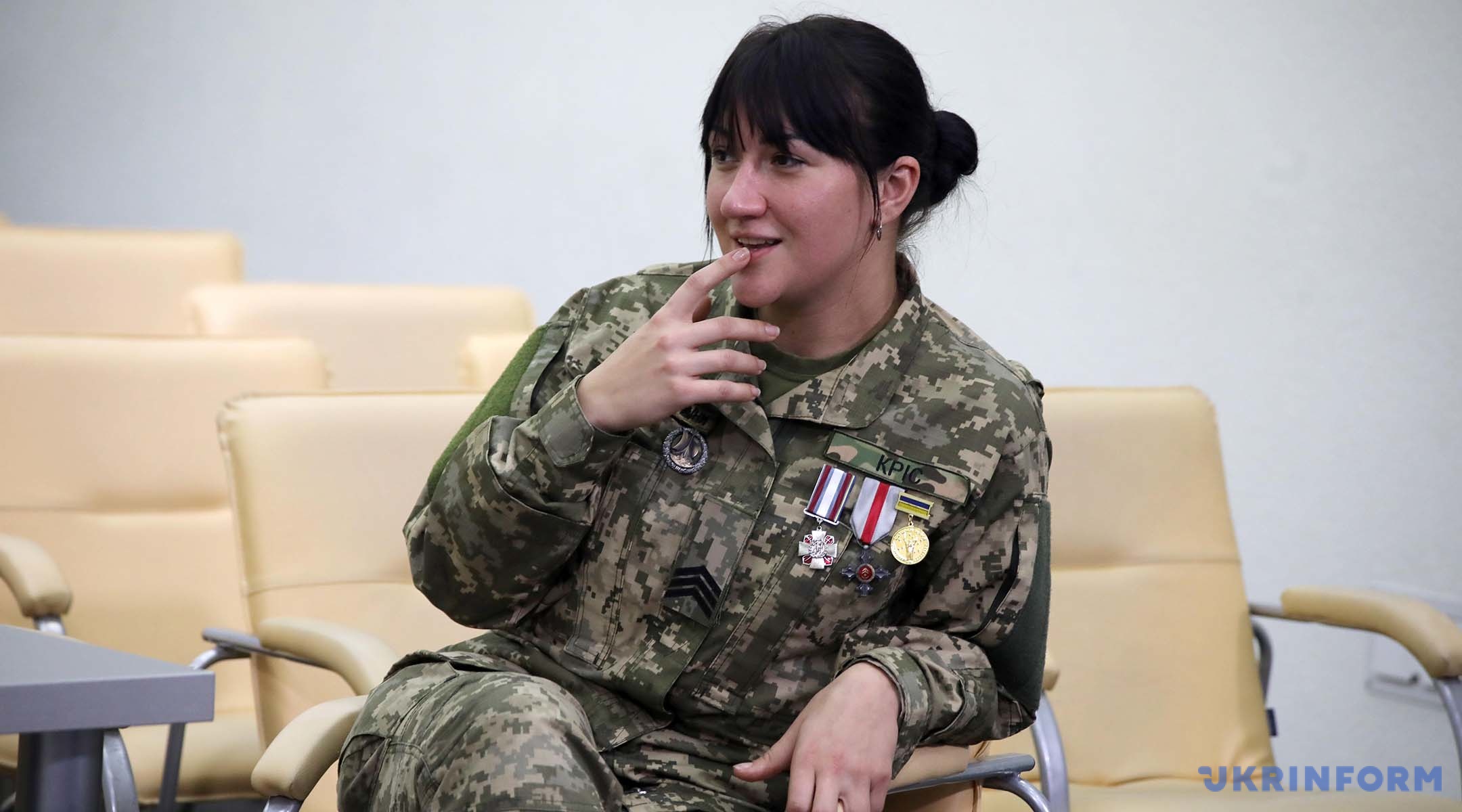
IN WAR, PSYCHOLOGICAL PROBLEMS HAPPEN TO ALL OF US
- How to spot a concussion?
- The general condition of the fighter will be unsatisfactory. Contused people need help. Of course, if everything is fine, he will return to the front. The main issue here is not to delay the examination of the victim.
- To what extent does contusion affect the onset of PTSD, is there a connection between them?
- Of course, there is. A contused person may have narrowed blood vessels in the brain and, as a result, migraines. Contusion aggravates other health problems, including chronic diseases. It also affects hearing and vision.
- Is monitoring the psychological state of soldiers at the front among the paramedics' duties?
- In the units, there is a position of deputy policemen who are supposed to do this. At war, psychological problems happen to each of us. Each successive precedent can negatively affect a soldier, even if he already has ten years of war experience. Sometimes panic attacks and aggression occur at the front. We should not forget that a man has a weapon in his hands. In this case, it is necessary to deprive him of the ammunition. It is more difficult with hallucinations, because you do not know whether you can help a person with medication.
- How do you understand that a person with an unsatisfactory moral and psychological state should be evacuated?
- I have a story from my own experience when it was clear that a person would not continue to fight. During the fighting, a shell hit one of our dugouts. One of the soldiers was killed, and the other was covered with earth. He was found when the front line was pulled back. He could not speak or walk, was disoriented and did not understand who he was. We took him to the rear, 300 meters from the positions. After the initial examination, he had an epileptic seizure, during which he screamed and bit his tongue. Then he regained consciousness, but had complete amnesia. He only remembered that his name was Serhiy. The guy spoke Ukrainian. When the wounded man heard a few Russian words from another fighter, he became hysterical. His condition deteriorated and his hallucinations intensified. I had to lie to him, saying that we were training, it was all dummies, don't worry. I wrote down the data I managed to find out and passed it on. In this case, hospitalization is necessary. The worst thing is that such people can have epilepsy for life. Despite everything, he has a chance for a normal life.
BASIC PARAMEDIC SKILLS WILL ALWAYS BE USEFUL FOR EVERYONE
- Can we say that during the war all Ukrainians should have at least minimal paramedic skills?
- Absolutely. Missiles and chess pieces are flying all over Ukraine... Imagine how many lives could be saved if people knew how to use at least turnstiles. It's not just about the war, really. Basic skills in paramedicine will always be useful for everyone, including during car accidents and disasters.
- Based on your experience, what are the main problems of the Ukrainian army in the field of medicine? How can the situation be improved?
- Fortunately, combat medicine has changed in the army in the past year and a half. It is noteworthy that the TCCC course is a NATO development that is changing as a result of our experience in combat. This is a high indicator of the quality of our army in general. As for the quality of supply, I can only speak for my unit. The supply of consumables is so good that I don't need them, although there are never too many of them. We are supplied by the state and volunteers. I will say an unpleasant thing, but it is easier for me to take materials from volunteers. The procedure for writing off state equipment is so complicated that it is better to sit near Bakhmut for six months than to deal with the documentation for a month.
- How can these bureaucratic processes be simplified?
- It is impossible to remove them, because they are everywhere. It's just easier in the war zone: everything is black and white, where it's clear who is your friend and who is not. Documentation is more difficult.
- What kind of medical equipment does the state provide?
- We are provided with everything we need, but there are things that the state cannot provide for various objective and subjective reasons.
- Why?
- It is difficult to buy certain equipment because it is simply not available on the market. In addition, certain types of equipment are not provided for provision.
- What exactly do you mean?
- I'm talking about knot tourniquets and intraosseous access. They can help save the most seriously injured, who have a slim chance of survival.
- Are there enough paramedics at the front?
- Of course not! In our battalion, there are medics who have been killed and seriously wounded and will not return to the front. The people who are in the battalion are occupying some places there. I can't take a platoon commander and appoint him a medic. We are looking for new people. You see, the new people have not seen the need to go to the front for at least a year and a half, so I am a bit afraid to take them. Some people appeal to religion, saying that my beliefs do not allow me to kill people. Okay, be like me and save people.
Besides, there is a lack of armored medical transport. No matter how long the war lasts, this component will always be missing. Medics are also being shot at... It is not a problem to provide tourniquets, but it is more difficult to provide people and equipment.
Vitaliy Tkachuk
Photo by Yulia Ovsyannikova
